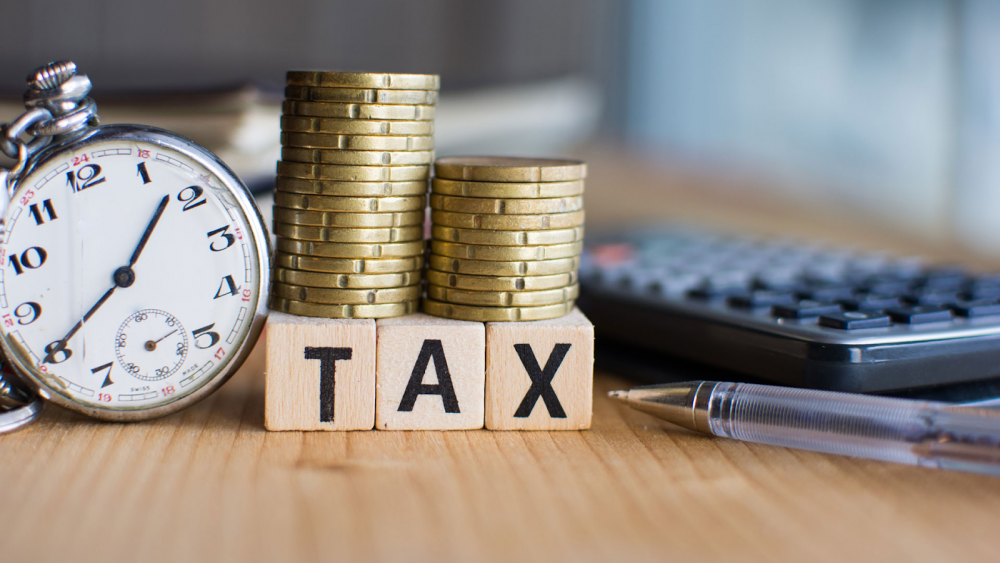
YASH RAJWANSHI – MARCH 3RD, 2020
EDITOR: EDGAR HILDEBRANDT ROJO
If you’ve been keeping up with the 2020 presidential election cycle, you have probably heard Elizabeth Warren, Bernie Sanders, and others reference the taxes paid by Amazon, one of the largest corporations in the United States. Many of the democratic candidates claim that the company paid as little as $0 in federal income taxes during the 2018 fiscal year. Unsurprisingly, this news sparked public outrage and backlash, forcing an official response from Amazon themselves.
Where did Amazon Come From?
Currently headquartered in Seattle, Washington, Amazon had a humble beginning in 1994 in Jeff Bezos’s garage with $10,000 of initial personal investment. The vision behind the foundation of Amazon was to create an online bookstore. Over the next few years, the company faced heavy losses due to investments in marketing and competition from major booksellers of the time, Barnes and Noble and Borders. The first omnichannel expansion for Amazon occurred in 1998, as the company began to incorporate musical sales on its website. By hosting its products online, Amazon offered its customers a wider selection of items. Over time, this gave Amazon a competitive advantage over traditional physical stores, which they capitalized on. Following this initial growth, Amazon continued to integrate various products to their online platform and make online shopping easier for their customers. These developments included patenting the one-click shopping mechanism, adding a loyalty membership, Amazon Prime, acquiring an audiobook company, developing a web-hosting platform, and monopolizing an automation system to streamline their production and distribution facilities. Through these various moments in Amazon’s history the company skyrocketed from an initial IPO in 1994 of $18 a share to a valuation of $1,748 as of December 12, 2019.
So, What’s the Problem?
Given this massive inflation of revenue and profits, it would traditionally make sense that Amazon also pays a proportional amount for income tax every year. For this reason, the claims from numerous candidates that the corporation is paying no money in income taxes either represent a misconception on the parts of the politicians or a gross failure of the American corporate tax code. To determine which of the two it is, let’s first, consider how Amazon’s taxes were structured for the fiscal year of 2018, and second, how the numbers were manipulated to show the apparent lack of taxation.
Amazon’s Tax Structure
Amazon nearly doubled their profits from 2017 to 2018 with an increase from $5.6 billion in 2017 to $11.2 billion in 2018. Despite this tremendous increase, analysts at the ITEP calculate that the company actually received an income tax rebate of $129 million for the financial year! Viewed simply, that rebate can be construed as Amazon actually making money from the corporate tax system in America. Some believe, however, that this is an oversimplification of a more complex interaction between the balance sheets and the IRS. To begin, there is no clear-cut way to know how much money Amazon spent on taxes for a given year; those reports are kept private. Instead, the company’s 10Q and 10K reports show accounting measures that are meant for the eyes of shareholders and therefore, fail to paint the entire picture. Next, the $129 million figure is more complicated than being a direct representation of the money earned due to income taxes. Rather, the “current provision” is an aggregate value that includes the actual tax bill, changes to any past predictions, and updates that reflect any alterations in laws and tax regulations. In this sense, the secretive tax reports along with the complicated processes to file taxes make it difficult, if not impossible, to accurately predict Amazon’s taxes. Rather, analysts prefer to use long-term measures that tell a different story about Amazon’s taxes. Some estimates show that from 2012 through 2018, Amazon reported $25.4 billion in pretax income and current federal tax provisions of $1.9 billion. This would equate to roughly an 8 percent tax-rate, which although low, is greater than zero.
Loopholes in the Tax Code
The fact that a snapshot of 2018 demonstrates an income from taxes for Amazon poses a serious question about the manner in which corporations can discount tax rates and exploit various loopholes. With Amazon specifically, the most applicable of these loopholes is the provision in the corporate tax code for stock options. In 2018, Amazon reduced its income taxes by more than $1 billion using this tax break. Essentially, most big companies will give their employees and executives opportunities to purchase stock options at a discounted price at some time in the future. After a law change in 2006, corporations were allowed to count the difference that they would pay out to employees between the actual stock price and the purchase price of the option as a decrease in book profits. This creates a disparity between the actual losses a company faces and the losses that it is able to report for tax deduction purposes. The book value of an option is calculated as the rough price of the stock at the time of the issue of the option, whereas the difference being paid out to employees is calculated based on the current value of the stock. In other words, companies that have had incredible growth in their stock price are handing out options at prices that are much smaller than the payments they are reporting. Moreover, the larger Fortune 500 companies tend to grow continuously, so their future stock prices are traditionally significantly higher than the price at the issue of the option. The other key aspect of this is that companies will generally have lower guesses for the value of their stock at the issuance of an option, creating an even larger disparity.
In fact, the issue is likely not limited to just Amazon and the stock option loophole. Some estimate that almost $13 billion in corporate income taxes were saved as a result of the stock option loophole across all Fortune 500 companies, Amazon included. A report from the Institution on Taxation and Economic Policy showed that 60 of the Fortune 500 companies avoided paying federal income taxes entirely in 2018. This included the use of multiple loopholes in the corporate tax code, including accelerated depreciation, fossil fuel tax subsidies, alternative energy tax subsidies, tax credits, and vague language in their financial statements. Accelerated depreciation capitalizes on the general writing of the tax code that allows corporations to expense their cost of capital at a faster rate than it actually depreciates. This creates a deduction in pre-tax income that allows the deference of taxes for years into the future so long as a company continues to invest portions of its earnings. Tax credits, another major loophole used by a wide variety of industry sectors, are essentially incentives for corporations to incorporate certain practices within their business model. Some examples of these practices may be research and development, energy efficient appliances, and work opportunity credits. By stacking the wide variety of incentives available, companies such as Netflix, Prudential, and Activision Blizzard have saved hundreds of millions of dollars in income taxes.
In truth, there is no definite conclusion to how much Amazon or the rest of these companies actually gave to the IRS as tax payments. What is becoming increasingly clearer, however, is that the tax code signed into law has holes that are being exploited by hundreds of individuals. Either through discounting their pre-tax earnings or by applying credits to their taxed income, corporations have clear ways of manipulating their finances and paying less of their fair share. For this reason, liberal politicians are continuing to highlight the problematic nature of the current tax code. As large corporations pay less in taxes, middle-class citizens are seeing their taxes rise too. The limitations placed on personal and dependent exemptions instituted by the 2017 tax bill passed by President Trump negatively affected 10 million middle-class Americans and exacerbated an already rampant problem. These effects do not just affect citizens economically. As a result of the increased income inequality from Trump’s tax cuts, economic growth has decreased and crime increased. The ramifications of this policy and the loopholes being used by these corporations are widespread and are already affecting millions of Americans.
What Does This Mean?
The example of Amazon is being highlighted in mainstream media, but in reality, the problem extends far beyond that single corporation. America is struggling with a tax code that may suppress the middle class and strengthen the power of large corporations. New policies such as Elizabeth Warren’s plan to tax all profits greater than $100 million for American corporations promise to end the current loopholes and help middle-class citizens . Whether these have merit or have long-term solvency is still up for heavy debate and will continue to be until the 2020 presidential election. Until then, Congress is taxed with finding ways to close the loopholes mentioned above. A failure to do so could have catastrophic effects for every American.
Featured Image Source: Finance Monthly
Disclaimer: The views published in this journal are those of the individual authors or speakers and do not necessarily reflect the position or policy of Berkeley Economic Review staff, the Undergraduate Economics Association, the UC Berkeley Economics Department and faculty, or the University of California, Berkeley in general.



